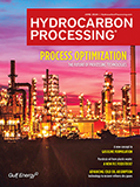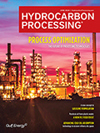An innovative process for simultaneously producing high-purity benzene and U.S.-grade gasoline from FCC C6 heartcut
Mobile Source Air Toxics (MSAT) II regulations restrict the average benzene level in gasoline sold in the U.S. to 0.62 vol%. In India and in several other countries, benzene in gasoline is presently restricted to 1 vol%. Fluid catalytic cracking (FCC) gasoline contributes to nearly 10%–20% of the gasoline pool in a typical refinery.
IP: 3.149.214.144
The Authors
Garg, M. - Reliance Industries Ltd., Mumbai, India
Dr. Madhukar Garg is the President of Refining and Petrochemical R&D at Reliance Industries Ltd. Before joining Reliance, Dr. Garg was the Director of the Indian Institute of Petroleum, Dehradun. He has more than 48 yr of experience in the petroleum and petrochemical industries. His areas of specialization includes solvent extraction, process integration, advanced control, simulation and modeling. He is an elected Fellow of the Indian National Academy of Engineering. Dr. Garg earned a BTech degree from LIT in Nagpur, India; an MTech degree from IIT–Kanpur and a PhD from the University of Melbourne, Australia.
Patil, R. - Reliance Industries Ltd., Mumbai, India
Rahul Patil is the Lead Research Scientist in the R&D division of Reliance Industries Ltd. He has more than 16 yr of experience in the petroleum refining and petrochemical industries. His professional interests include the debottlenecking and optimization of petroleum refinery and petrochemical units, the application of computational fluid dynamics and process modeling tools, and the modeling and simulation of these units. Patil earned a Bch degree in chemical engineering from the Institute of Chemical Technology, Mumbai, India; and an MTech degree in chemical engineering from the Indian Institute of Technology, Kanpur.
Sapre, A. V. - Reliance Industries Ltd., Mumbai, Maharashtra, India
Dr. Ajit Sapre is the Group President R&D at Reliance Industries Ltd. He has more than 40 yr of industrial experience in the oil and gas, refining, petrochemicals, renewable energy, sustainability and biotechnology businesses, among others. He has broad experience in varied technical areas, manufacturing, business and corporate strategy. Dr. Sapre received his PhD in chemical engineering from the University of Delaware, and an MBA from Cornell University. He has won numerous national and international awards, the most recent being the 2023 ASM International’s Medal for Advancement of Research.
Kumar, S. - CSIR-Indian Institute of Petroleum, Dehradun, India
Dr. Sunil Kumar is a the Senior Principal Scientist at CSIR-Indian Institute of Petroleum, Dehradun. He has 14 yr of experience in the refining and chemical industries. His professional interests include flow scheme synthesis, simulation, design, scale-up, debottlenecking, pinch analysis and the process integration of chemical and refining processes, as well as the development of energy and capital efficient distillation, extraction and absorption-based separation processes using experimental data and process simulation tools. Dr. Kumar received a BTech degree from HBTI Kanpur, an MTech degree from IIT Kanpur and a PhD from IIT Roorkee.
Ghosh, P. - CSIR-Indian Institute of Petroleum, Dehradun, India
Prasenjit Ghosh is a Senior Research Scientist at CSIR Indian Institute of Petroleum Dehradun. His research interests include separation processes, reaction engineering, process modeling and simulation, and process intensification. At CSIR IIP, he heads the aromatics extraction area and the associated process modeling and simulation area. He earned a BE degree in chemical engineering from Jadavpur University Kolkata, and an MTech degree in chemical engineering from IIT Kanpur.
Related Articles
From the Archive











Comments